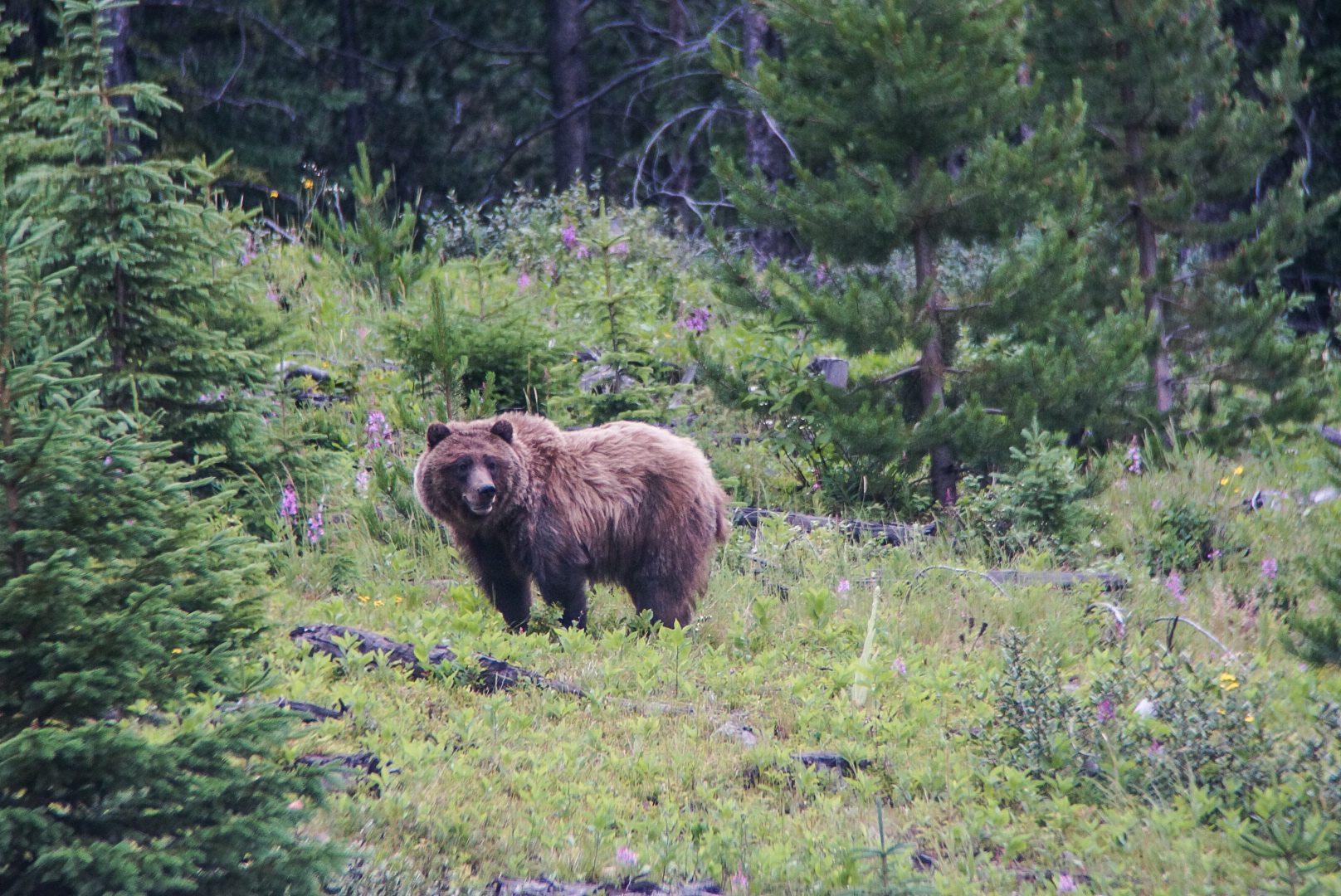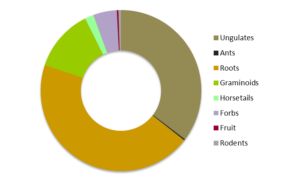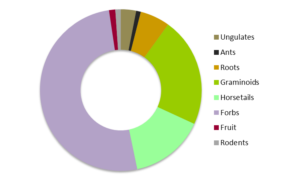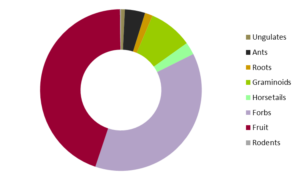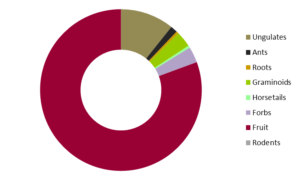Our bears
About the bears
The Flathead and Elk valleys are home to a large population of grizzly bears. Although the same species as brown bears found on the coast, here they eat a more plant based diet and as a result are smaller than the bears found on the coast. To meet all of their dietary needs bears eat a range of foods from different habitats throughout their active season (~April – November). It is important to understand which foods they are using and which habitats they obtain these from to predict changes in population that may occur due to changes in food availability.
Diet
Besides many micro nutrients, grizzlies require both digestible energy and protein and their behaviour revolves around obtaining these.
In this ecosystem, energy comes mostly as carbohydrates (sugars are simple one chain carbohydrates and other multi chain carbohydrates can also be found in plants). The main sources of carbohydrates in the diet of our bears are berries. Bears consume both buffalo berries and huckleberries in large quantities with other berries also being eaten when available. The availability of berries affects the growth of bears because they convert sugar to fat and store it for use during hibernation. Carbohydrates are also extracted in lesser quantities from all other foods bears eat.
Protein is required by all animals to build, and re-build, tissue during their life. As our bears live in the interior they cannot use salmon as a source of protein, but they have other ways of fulfilling this component of their diet. Protein for interior bears can be found in a number of foods. Nitrogen fixing plants such as clover are high in protein and other plants, such as cow parsnip, is even higher in protein. Other plants usually have lower quantities. Bears may eat fish such as kokanee opportunistically however, it is large source of protein for only a few bears in the south Rockies. One large source of protein for South Rockies bears comes from ungulates (hoofed animals), although isotope data suggests female bears consume very little. Ungulate meat forms a large part of the grizzly bear diet in the early spring and the fall. Bears search for the carcasses of animals that died over winter and hunt animals that have been weakened weak during winter in early spring. In late spring they actively hunt the young of deer, elk and moose. In fall, they search for the remains of these same animals that have been left by hunters.
The third macronutrient required by bears is fat. This molecule stores energy so that bears can live through the vagaries of a temperate climate. Although fat can be made from other nutrient sources it is much more efficient to consume it directly. Fat can be sourced from ungulates and White Bark Pine nuts although Flathead bears have not been documented consuming the nuts so this is likely a rarely utilized, if at all, food source.
Seasonal changes
To fulfill all of their dietary requirements the bears follow a seasonal pattern. This has been well documented both in Flathead bears and other populations throughout North America. You can see where the bears go throughout their annual cycle here . As different food groups become more abundant their contribution to the bears diet changes. You can see here the changes in the bears diet throughout the seasons.
